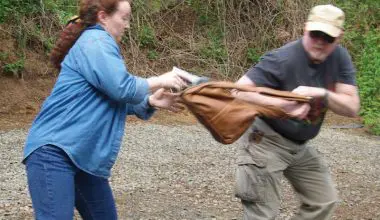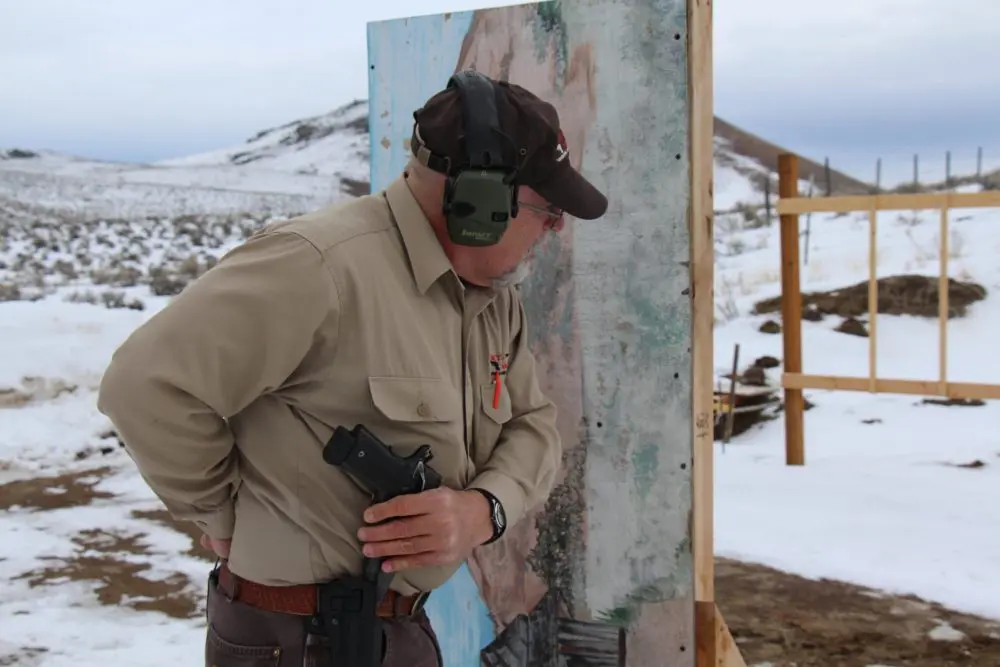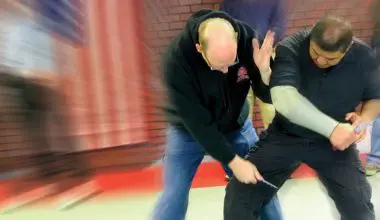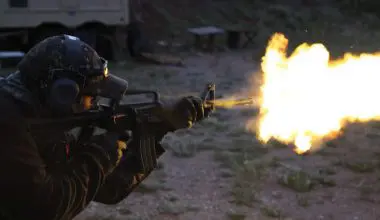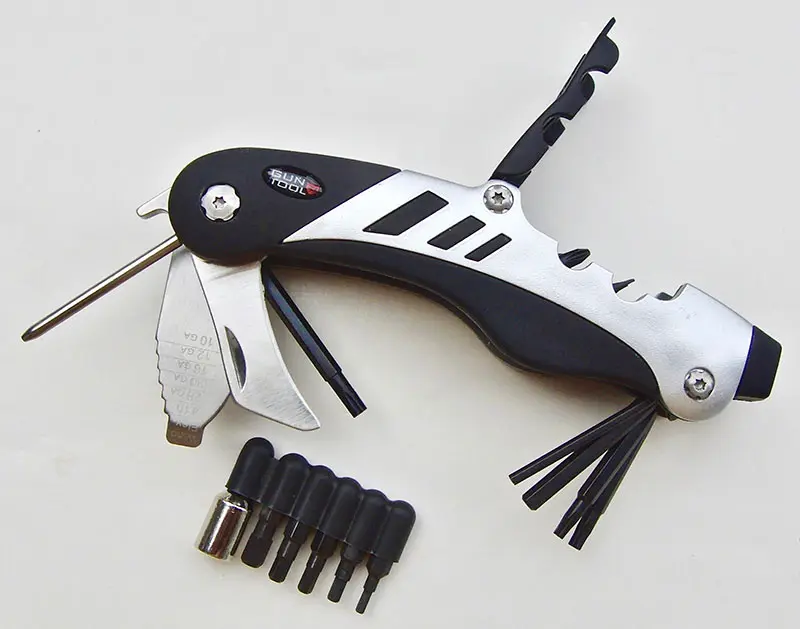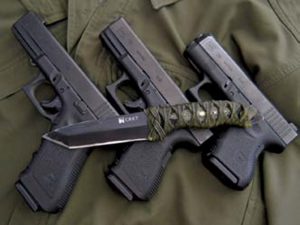
I begin most of my courses with an emphasis on combat mindset and try to set the context applicable to the course of instruction. With this class, I talked about a traditional foundation of the Warrior’s mindset dating back over 500 years.
The reason for this shift was my realization that police officers have become increasingly disconnected from the notion that they are indeed warriors.
Have emotional survival training and political correctness done irreparable damage to the psyche of police officers? Where has the camaraderie gone? Where are the bonds that build a healthy competitive nature to shoot the straightest, be the fastest, and make more arrests? Have we lost our way?
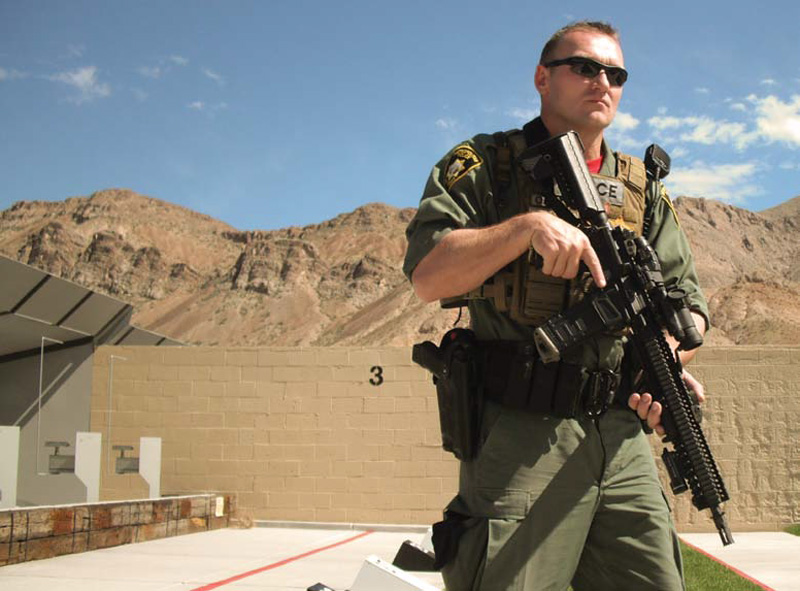
Table of Contents
WARRIOR CULTURE
Throughout history, the underlying common thread of successful Warrior cultures has been a moral code of conduct and common tools, tactics and motivations. The European Knights of the Middle Ages had chivalry, and the Japanese Samurai followed the code of Bushido. In teaching my class, I made the connection between police officers and the traditional Samurai because of the striking similarities.
The word Bushido is derived from the Japanese word Bushi, which translates to “armed gentry” or simply “warrior.” Many people believe Samurai means “warrior,” but the correct translation of Samurai is “to serve.” Bushido means “the way of the Warrior,” and this code consists of seven virtues: Integrity, Courage, Benevolence, Respect, Honesty, Honor and Loyalty.
Without a code of ethical behavior, the Warrior is nothing more than a hired gun or assassin. The Code guides the Warrior on a true and righteous path and creates a sense of belonging to the culture. The police department I am a member of has adopted a set of values that includes Integrity, Courage, Accountability, Respect and Excellence. Sure sounds like Bushido to me.
The Samurai served their feudal lord in warfare, but this was very rarely required of them. The Samurai usually acted as police officers or sheriff’s deputies by maintaining law and order throughout the territorial land their lord ruled and governed.
They were “to serve” their lord in completing various tasks. The Samurai were also required “to protect” the lord and his citizens. The truly dedicated Samurai, who took pride in their personal development by training in the martial arts and keeping their tools and minds sharp, referred to themselves as “Bushi,” not “Samurai,” as they found Bushi to be a more dignified title.
Are we seeing another parallel yet? To Serve and Protect are not just words. They are separate, but equally important, ideals of the Warrior class. If you are familiar with the writings of historical Warriors, you may have heard of The Book of Five Rings by Samurai tactician Miyamoto Musashi. Musashi was involved in numerous deadly encounters throughout his life, and through them learned much about his own fighting style, the styles of others, and the use of weapons.
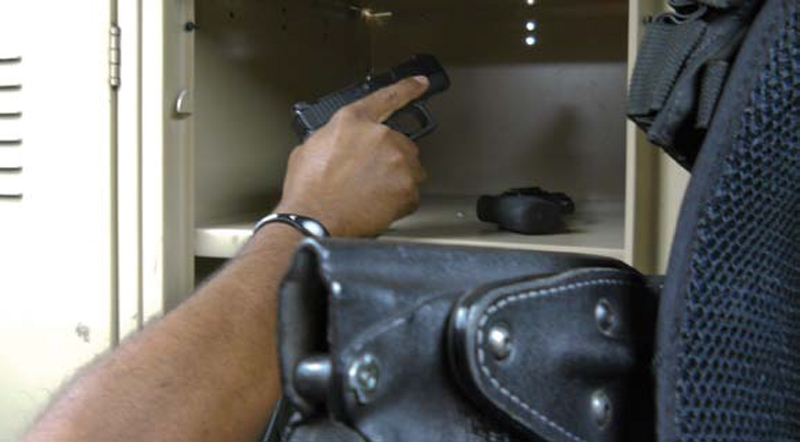
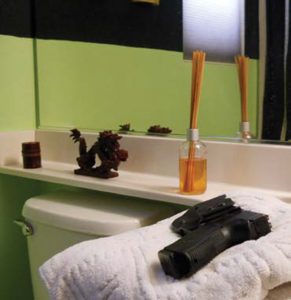
WARRIOR ARMS
Musashi once wrote, “there is no Warrior without a sword.” He was emphasizing that if the Warrior is in the proper mindset, he will never be without the tools of his trade. The Samurai would always have a sword within arm’s reach—even when bathing or sleeping. Do you keep a firearm within arm’s reach at all times?
The Samurai always carried a minimum of two swords—the Katana and the Wakizashi—when out in public. The two swords carried at the waist, daisho, meaning “big and small,” identified them as Samurai. This was their badge, their duty.
The Samurai carried the short sword (Wakizashi) for confined spaces, and the long sword (Katana) for more reach. According to Musashi, “in distinguishing the advantages of the tools of Warriors, we find that whatever the weapon, there is a time and situation in which it is appropriate.”
The sword is not a mechanical device with moving parts like a firearm, yet the Samurai always had a backup. Carrying two large steel blades every day could not have been comfortable or convenient, yet they never left their swords at home if they had a day off or felt it cumbersome. This was the Warrior way.
We don’t wear seatbelts because we want to be involved in an accident, we don’t wear body armor because we want to get shot, and we don’t carry firearms because we want to get in a gunfight. These things are simply preparation and insurance for the possibility of a tragic event.
If you leave your arms at home, you may as well leave your Warrior mindset in the safe. Confronting a suspect armed with a rifle when you are armed only with your bare hands will usually not have a favorable outcome. I don’t care if you’re Bruce Lee, Jackie Chan or the hordes of Japanese soldiers at Guadalcanal and Saipan who mistakenly assumed that determination alone can win a battle. I’m definitely not saying to roll over and give up. I’m simply indicating that proper planning prevents premature planting.
RULE OF TWO
When anticipating a gunfight, utilize a rifle or shotgun when you can, and have comrades armed with long guns, but never violate rule number two of gunfighting: Have a gun and preferably two. (Rule number one: Don’t be in a gunfight if you can avoid it.)
H.R. 218, The Law Enforcement Officer’s Safety Act, allows all active and retired officers, with few exceptions, to carry concealed in these United States. If you identify with the core Warrior principles, you will never be without your tools. Jeff Hall, founder of Hojutsu, “Martial Art of the Gun,” wrote an article in the June 2010 issue of S.W.A.T. Magazine entitled “The Rule of Two.” Jeff detailed the specific reasons for carrying two guns, knives, lights, etc., but it begins with the philosophy that you are a Warrior 24/7. Just because you take off the uniform, punch the clock, or retire the badge does not mean you turn off the Warrior within.
A few years ago, a large group of police officers were at a local bar enjoying a band when three armed and masked gunmen entered the bar to perpetrate a take-over robbery. A struggle ensued and shots were fired into the crowded bar. A single warrior met one of the gunmen face-to-face and they emptied their guns into each other at pointblank range. This warrior was shot seven times yet was able to get more effective shot placement, and the gunman expired as he attempted to flee the bar with his two accomplices. I personally know this warrior. He recovered from his wounds and currently carries no less than two guns.
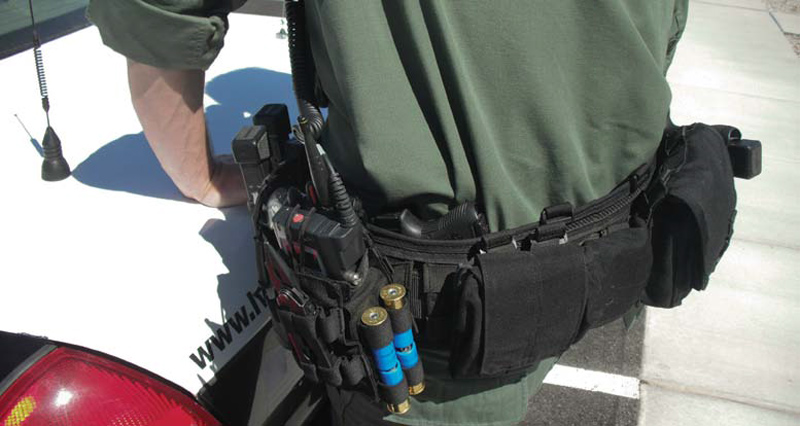
ON- AND OFF-DUTY CARRY
I personally recommend that all modern- day Warriors carry a full-size handgun at the waist as well as a backup gun on- and off-duty. A firearm must be within reach at all times (consider a carbine or shotgun at home).
A full-size gun and a backup can be concealed—it just takes commitment. I live in the southwestern desert and, even in the middle of summer, when temperatures can reach over 115 degrees, I can personally vouch for the fact that two guns can be concealed. With more styles of holsters on the market now than ever before, there is no legitimate excuse for police officers not to be armed, unless they only see themselves in the service business instead of the protection business.
Many officers rarely carry off-duty, and then only when it’s convenient. Police officers should see the act of carrying two guns as the standard way a Warrior is properly prepared.
In early 2010, a tactically sound police officer and former Marine was confronted while off-duty at the entrance to his open garage by three armed thugs. They picked his home at random with every intention of robbing and causing his family harm. The officer had a firearm within arm’s reach and was able to defend his family even though he was outnumbered and surrounded. He was the sheepdog between the wolves and his family, who were inside the home just feet from him. Although he gave his life in service to his family and community, he was able to repel the attackers and shoot one of the suspects. They fled and were captured when they sought medical attention. He facilitated the capture of his murderers posthumously.
While this event had a tragic outcome, without a firearm within arm’s reach, the results would have been devastating. He was, and always will be, a true Warrior. I was honored to call him a friend.
Another friend, Mike, who recently retired after 30 years of dedicated service, used to ask, “What changes when you go off-duty? Does the world get safer? If you carry a full-size sidearm and a backup gun on-duty, why not off-duty as well? If you would not carry that subcaliber gut gun as your primary sidearm on-duty, why is it so great?”
It comes down to the simple, yet timeless, Warrior mindset.
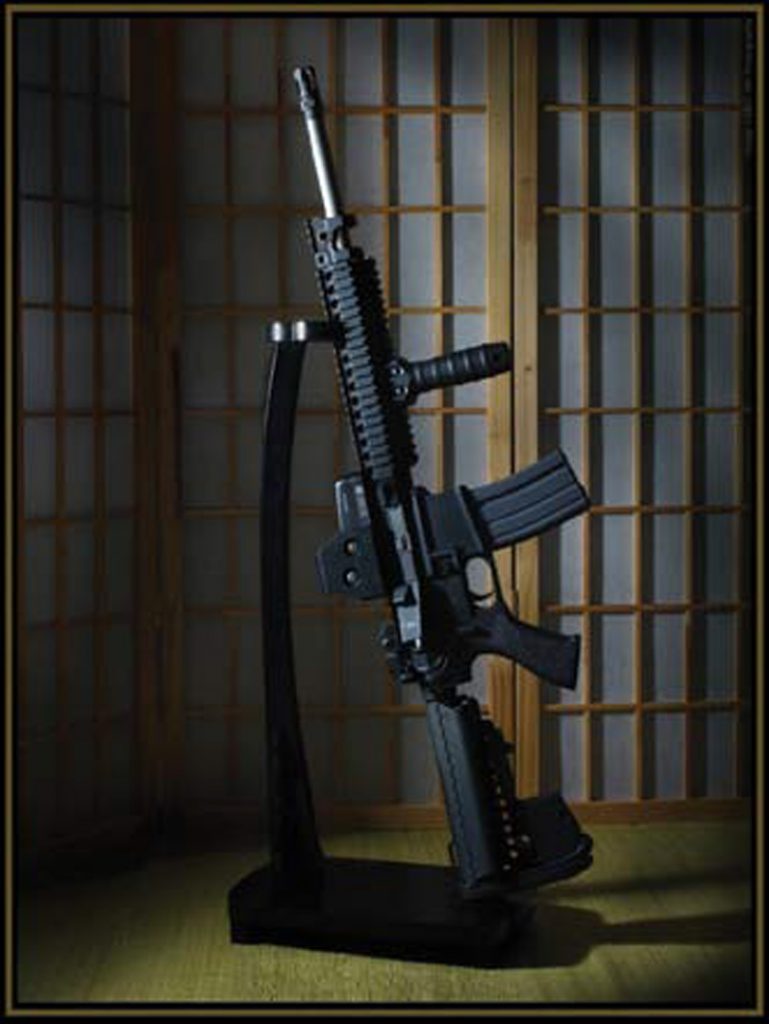
WARRIOR MINDSET
Many modern Warriors and instructors have understood the parallels to the Samurai. TangoDown/VLTOR sells a poster depicting an AR-15 resting upright in a vertical sword stand with the quote, “Only the tools of the Warrior change; not his mindset.” Magpul markets their DVD training series, “Art of the Handgun/Shotgun/Rifle,” with Samurai symbolism gracing the covers. But all of this is just symbolism unless you accept the true way of the modern Warrior. The firearm is our tool and the wearing of our tools at all times is as much a symbolic representation of the acceptance of the Warrior class as it is practical for personal and professional defense.
When most people hear the words “martial art,” they visualize Karate or Tae Kwon Do practitioners in white pajamas wearing colored belts and kicking pine boards. But the words “martial art” translate to “combat study.” The Japanese Warrior studied the martial arts of archery, swordsmanship, openhand fighting, and others. The primary weapon of the Samurai was the sword, and Musashi believed his students should be able to wield the sword with both the dominant and non-dominant hands. If Musashi were alive today, he would carry two guns.
You can explain the reasons an officer should carry a backup: malfunction, injury to dominant hand, retention of primary in a struggle or that the quickest reload is a second gun. You can explain why you should carry a gun offduty and how to carry and present that gun from any number of different carry methods, but the most difficult thing to teach is what comes from within. Will you protect the weak and innocent when the need arises by acting with honor and courage, or will you follow the “it won’t happen to me” mentality? Will you accept that you are armed gentry and part of a Warrior culture?
Visualize why you carry a gun and practice your skills with handgun, shotgun and rifle. It should not be considered extreme or unusual to carry at least two guns; it should be the rule rather than the exception. This act will ensure you are prepared for the worst possible scenario at the worst possible time because wearing two guns is a constant reminder of your acceptance of your role as a Warrior. It will allow you to “serve and protect,” because this is our way, the true way— the way of the Warrior.
